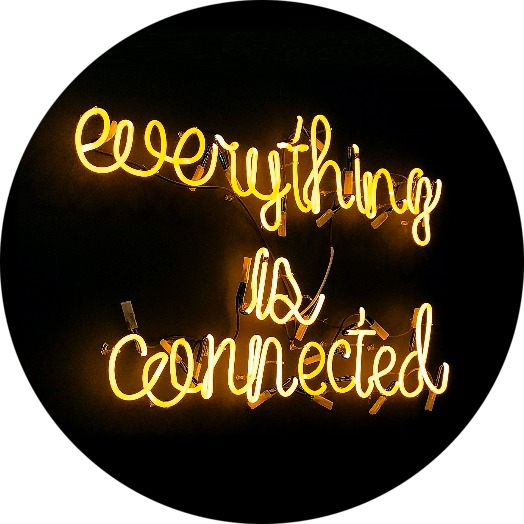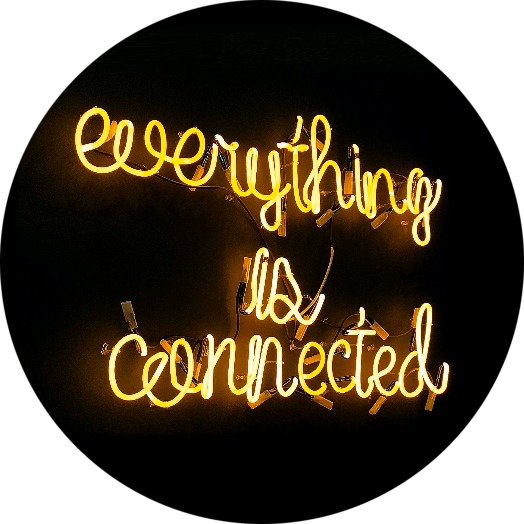MyModus — Complete Development Plan
1. Architecture and environment
1.1. Define the architecture:
Flutter (mobile + web)
Node.js/Dart backend
DB: PostgreSQL + Redis (cache)
Web3 backend: Hardhat + Ethereum mainnet/testnet
Data Storage: IPFS/Filecoin (Web4)
1.2. Create a GitHub repository with CI/CD (GitHub Actions).
1.3. Prepare a dev/prod environment in Docker.
---
2. Marketplace parsing (Ozon, WB, Lamoda)
2.1. Integrate botasaurus (or a custom Python parser) for:
Receiving MyModus product cards at each site
Collecting prices, discounts, availability
Collecting reviews and ratings
2.2. Create API endpoints:
/products/{platform} — list of products
/products/{id} — product details
/products/updates — price updates
2.3. Configure auto-update (cron + cache in Redis).
---
3. M MyModus Store
3.1. Catalog screen with filtering and sorting.
3.2. The product card with the “Buy” button → switches to Ozon/WB/Lamoda.
3.3. Product price history.
3.4. Recommendations (an AI model based on sales and trends).
---
4. Web3 + Web4
4.1. Ethereum integration:
Connecting wallets (MetaMask, WalletConnect)
Signing transactions
by Deploying smart contracts for loyalty tokens
4.2. NFT functionality:
NFT badges for customers
NFT discount coupons
4.3. Web4 (IPFS/Filecoin):
Decentralized storage of photos/videos of goods
Storage of media from a social network
---
5. Social network (Instagram style)
5.1. User profiles (avatar, bio, subscriptions).
5.2. Feed of posts (photos/videos of products, stories).
5.3. Likes, comments, reposts.
5.4. Internal chat (Matrix API).
5.5. Hashtags (MyModusLook, OzonStyle).
---
6. UI/UX
6.1. Instagram-style design, but with store blocks.
6.2. Dark/light theme.
6.3. Animations during transitions.
6.4. PWA support for the web version.
---
7. 🖥 Backend API
7.1. Authorization (JWT + Web3 sign-in).
7.2. CRUD for posts, products, and users.
7.3. API for marketplace parsing.
7.4. API for Web3/NFT operations.
---
8. CI/CD
8.1. Auto-builds of Flutter applications (APK, IPA, Web).
8.2. Build of backend and smart contracts.
8.3. Deployment to Docker/Kubernetes.
8.4. Publication in GitHub Releases.
---
9. A AI integration
9.1. Product description generation (OpenAI API).
9.2. AI-recommendations based on purchase history.
9.3. AI-moderation of social network content.
---
10. Implementation plan
Stage 1: Architecture + backend + marketplace parsing.
Stage 2: Store + social network + basic UI.
Stage 3: Web3 + NFT + Web4 storage.
Stage 4: AI functions + recommendations.
Stage 5: Optimization + release in the App Store/Google Play.
1. Architecture and environment
1.1. Define the architecture:
Flutter (mobile + web)
Node.js/Dart backend
DB: PostgreSQL + Redis (cache)
Web3 backend: Hardhat + Ethereum mainnet/testnet
Data Storage: IPFS/Filecoin (Web4)
1.2. Create a GitHub repository with CI/CD (GitHub Actions).
1.3. Prepare a dev/prod environment in Docker.
---
2. Marketplace parsing (Ozon, WB, Lamoda)
2.1. Integrate botasaurus (or a custom Python parser) for:
Receiving MyModus product cards at each site
Collecting prices, discounts, availability
Collecting reviews and ratings
2.2. Create API endpoints:
/products/{platform} — list of products
/products/{id} — product details
/products/updates — price updates
2.3. Configure auto-update (cron + cache in Redis).
---
3. M MyModus Store
3.1. Catalog screen with filtering and sorting.
3.2. The product card with the “Buy” button → switches to Ozon/WB/Lamoda.
3.3. Product price history.
3.4. Recommendations (an AI model based on sales and trends).
---
4. Web3 + Web4
4.1. Ethereum integration:
Connecting wallets (MetaMask, WalletConnect)
Signing transactions
by Deploying smart contracts for loyalty tokens
4.2. NFT functionality:
NFT badges for customers
NFT discount coupons
4.3. Web4 (IPFS/Filecoin):
Decentralized storage of photos/videos of goods
Storage of media from a social network
---
5. Social network (Instagram style)
5.1. User profiles (avatar, bio, subscriptions).
5.2. Feed of posts (photos/videos of products, stories).
5.3. Likes, comments, reposts.
5.4. Internal chat (Matrix API).
5.5. Hashtags (MyModusLook, OzonStyle).
---
6. UI/UX
6.1. Instagram-style design, but with store blocks.
6.2. Dark/light theme.
6.3. Animations during transitions.
6.4. PWA support for the web version.
---
7. 🖥 Backend API
7.1. Authorization (JWT + Web3 sign-in).
7.2. CRUD for posts, products, and users.
7.3. API for marketplace parsing.
7.4. API for Web3/NFT operations.
---
8. CI/CD
8.1. Auto-builds of Flutter applications (APK, IPA, Web).
8.2. Build of backend and smart contracts.
8.3. Deployment to Docker/Kubernetes.
8.4. Publication in GitHub Releases.
---
9. A AI integration
9.1. Product description generation (OpenAI API).
9.2. AI-recommendations based on purchase history.
9.3. AI-moderation of social network content.
---
10. Implementation plan
Stage 1: Architecture + backend + marketplace parsing.
Stage 2: Store + social network + basic UI.
Stage 3: Web3 + NFT + Web4 storage.
Stage 4: AI functions + recommendations.
Stage 5: Optimization + release in the App Store/Google Play.
MyModus — Complete Development Plan
1. 📦 Architecture and environment
1.1. Define the architecture:
Flutter (mobile + web)
Node.js/Dart backend
DB: PostgreSQL + Redis (cache)
Web3 backend: Hardhat + Ethereum mainnet/testnet
Data Storage: IPFS/Filecoin (Web4)
1.2. Create a GitHub repository with CI/CD (GitHub Actions).
1.3. Prepare a dev/prod environment in Docker.
---
2. 🔍 Marketplace parsing (Ozon, WB, Lamoda)
2.1. Integrate botasaurus (or a custom Python parser) for:
Receiving MyModus product cards at each site
Collecting prices, discounts, availability
Collecting reviews and ratings
2.2. Create API endpoints:
/products/{platform} — list of products
/products/{id} — product details
/products/updates — price updates
2.3. Configure auto-update (cron + cache in Redis).
---
3. M MyModus Store
3.1. Catalog screen with filtering and sorting.
3.2. The product card with the “Buy” button → switches to Ozon/WB/Lamoda.
3.3. Product price history.
3.4. Recommendations (an AI model based on sales and trends).
---
4. 🌐 Web3 + Web4
4.1. Ethereum integration:
Connecting wallets (MetaMask, WalletConnect)
Signing transactions
by Deploying smart contracts for loyalty tokens
4.2. NFT functionality:
NFT badges for customers
NFT discount coupons
4.3. Web4 (IPFS/Filecoin):
Decentralized storage of photos/videos of goods
Storage of media from a social network
---
5. Social network (Instagram style)
5.1. User profiles (avatar, bio, subscriptions).
5.2. Feed of posts (photos/videos of products, stories).
5.3. Likes, comments, reposts.
5.4. Internal chat (Matrix API).
5.5. Hashtags (MyModusLook, OzonStyle).
---
6. 🎨 UI/UX
6.1. Instagram-style design, but with store blocks.
6.2. Dark/light theme.
6.3. Animations during transitions.
6.4. PWA support for the web version.
---
7. 🖥 Backend API
7.1. Authorization (JWT + Web3 sign-in).
7.2. CRUD for posts, products, and users.
7.3. API for marketplace parsing.
7.4. API for Web3/NFT operations.
---
8. 🚀 CI/CD
8.1. Auto-builds of Flutter applications (APK, IPA, Web).
8.2. Build of backend and smart contracts.
8.3. Deployment to Docker/Kubernetes.
8.4. Publication in GitHub Releases.
---
9. A AI integration
9.1. Product description generation (OpenAI API).
9.2. AI-recommendations based on purchase history.
9.3. AI-moderation of social network content.
---
10. 📅 Implementation plan
Stage 1: Architecture + backend + marketplace parsing.
Stage 2: Store + social network + basic UI.
Stage 3: Web3 + NFT + Web4 storage.
Stage 4: AI functions + recommendations.
Stage 5: Optimization + release in the App Store/Google Play.
0 Comments
0 Shares
169 Views
0 Reviews




